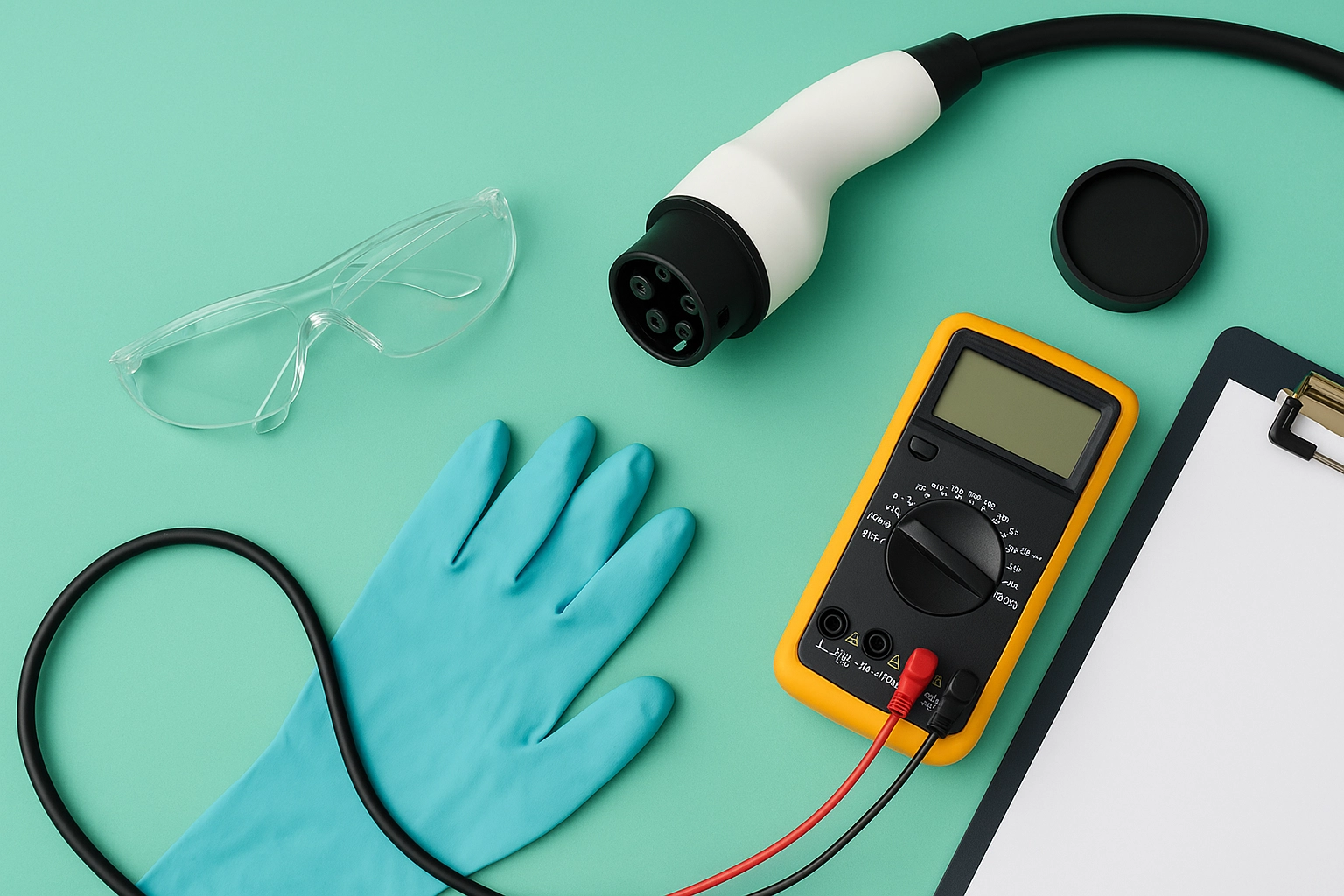EN 50620 Electric Vehicle Charging Cable Durability Test
The EN 50620 standard is a European technical specification that sets out the requirements for electric vehicle (EV) charging cables and connectors. This test evaluates the durability of EV charging cables, ensuring they can withstand the rigors of repeated use in real-world conditions. The test focuses on mechanical stress, environmental exposure, and electrical performance to guarantee safety and reliability.
The EN 50620 standard is crucial for manufacturers and suppliers of charging infrastructure. Compliance with this standard ensures that EV charging cables can be safely used in public and private settings, thereby enhancing consumer confidence. The test typically involves the following steps:
- Preparation: Charging cables are subjected to a series of mechanical stress tests, including bending, pulling, and twisting.
- Environmental Exposure: Cables are exposed to various environmental conditions such as temperature cycling, humidity, and UV radiation to simulate real-world usage.
- Electrical Performance Tests: The integrity of the electrical connections is tested under simulated charging scenarios.
The test aims to ensure that EV charging cables can withstand a minimum number of cycles before any signs of wear or failure appear. This ensures that consumers have reliable and safe charging solutions, which is critical for the widespread adoption of electric vehicles.
Compliance with EN 50620 also helps manufacturers meet regulatory requirements in countries and regions that adopt this standard. For instance, many European markets require adherence to these standards before approving EV chargers for sale or installation.
The test procedure is detailed in the EN 50620-1 specification document. It outlines specific parameters for each test, including the number of cycles required and the environmental conditions under which testing should be conducted. The standard also provides guidance on how to prepare specimens for testing and how to interpret results.
The importance of this test cannot be overstated. As electric vehicles become more prevalent, ensuring that charging infrastructure is robust and reliable is essential. By adhering to EN 50620, manufacturers can demonstrate their commitment to quality and safety, which is critical for building trust with consumers and regulators.
The test results are typically reported in a detailed document that includes the number of cycles completed without failure, any observed wear or damage, and electrical performance metrics. This information is crucial for quality managers and compliance officers as it helps them make informed decisions about product reliability and safety.
Why Choose This Test
The EN 50620 Electric Vehicle Charging Cable Durability Test is a critical component of ensuring the quality and safety of EV charging infrastructure. Here are some reasons why you should choose this test:
- Regulatory Compliance: Many countries require compliance with EN standards to sell or install charging equipment.
- Safety Assurance: The test ensures that cables can withstand the stresses of repeated use, reducing the risk of accidents and injuries.
- Prolonged Lifespan: By identifying potential failures early, this test helps manufacturers design longer-lasting products.
- Consumer Trust: Reliable charging infrastructure fosters confidence among consumers, encouraging broader adoption of electric vehicles.
The test is also a valuable tool for R&D engineers and procurement teams. It provides insights into the performance characteristics of different materials and designs, enabling informed decision-making during product development and sourcing processes.
International Acceptance and Recognition
The EN 50620 standard is widely recognized across Europe and has been adopted by numerous countries. Its acceptance ensures that manufacturers can sell their products internationally with confidence, as they are meeting a globally respected standard.
Many national and international standards bodies have endorsed the EN family of specifications. For instance, the European Committee for Standardization (CEN) and the International Electrotechnical Commission (IEC) both recognize EN 50620 as an essential part of the global regulatory framework for EV charging infrastructure.
The standard is also aligned with other international standards such as ISO/IEC 17025, which sets requirements for competence of testing and calibration laboratories. This alignment ensures that laboratories conducting EN 50620 tests are held to a high level of quality and reliability.
Compliance with this standard is not only beneficial for manufacturers but also for public charging operators who need to ensure the safety and performance of their infrastructure. By adhering to these standards, they can demonstrate their commitment to providing reliable and safe services, which is critical in building trust with consumers.
Environmental and Sustainability Contributions
- Reduction of Waste: By ensuring that charging cables can withstand repeated use, this test helps reduce the amount of electronic waste generated by replacing faulty or damaged chargers.
- Energy Efficiency: Reliable charging infrastructure ensures that electric vehicles are charged efficiently, reducing energy consumption and associated carbon emissions.
- Sustainable Materials: The use of durable materials in EV charging cables can lead to the development of more sustainable products with longer lifespans.
The environmental impact of this test extends beyond individual products. By promoting the use of reliable and long-lasting chargers, it contributes to a greener future by reducing the need for frequent replacements and repairs. This aligns with broader sustainability goals in the automotive sector, where the focus is on reducing the carbon footprint of transportation.
Manufacturers who comply with this standard are also contributing to the global push towards more sustainable practices. By ensuring that their products meet these stringent standards, they are helping to create a more resilient and environmentally friendly infrastructure for electric vehicles.





